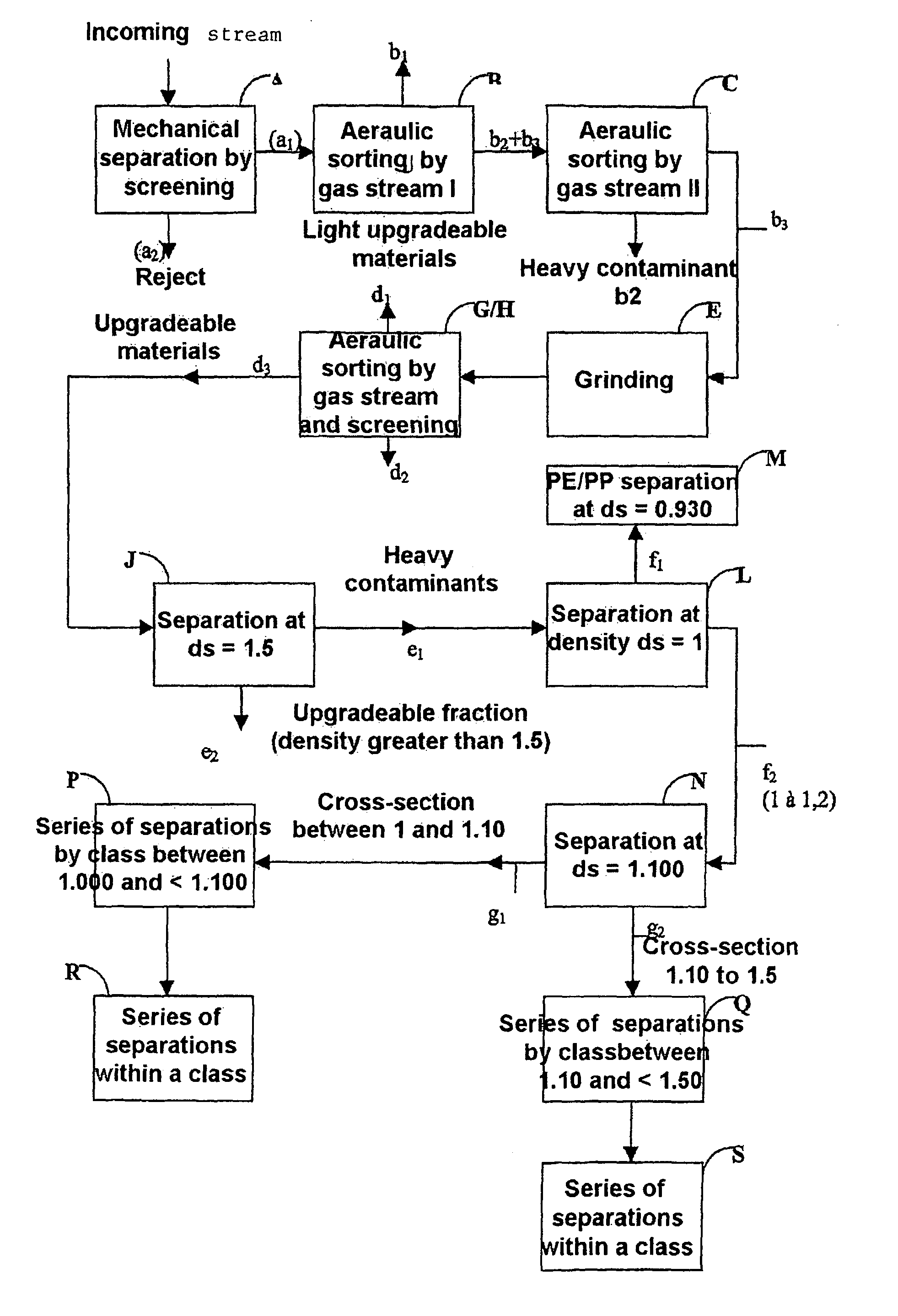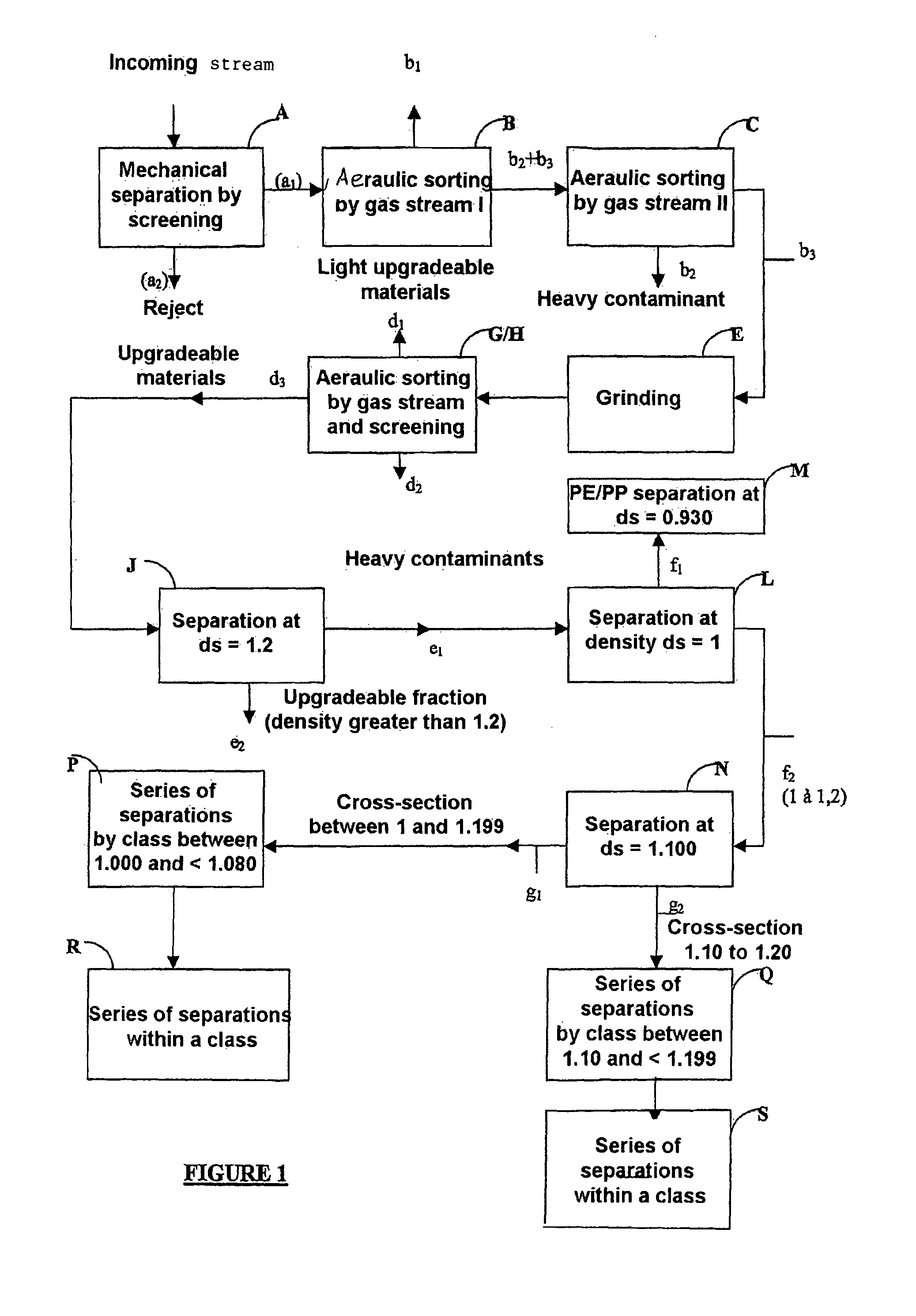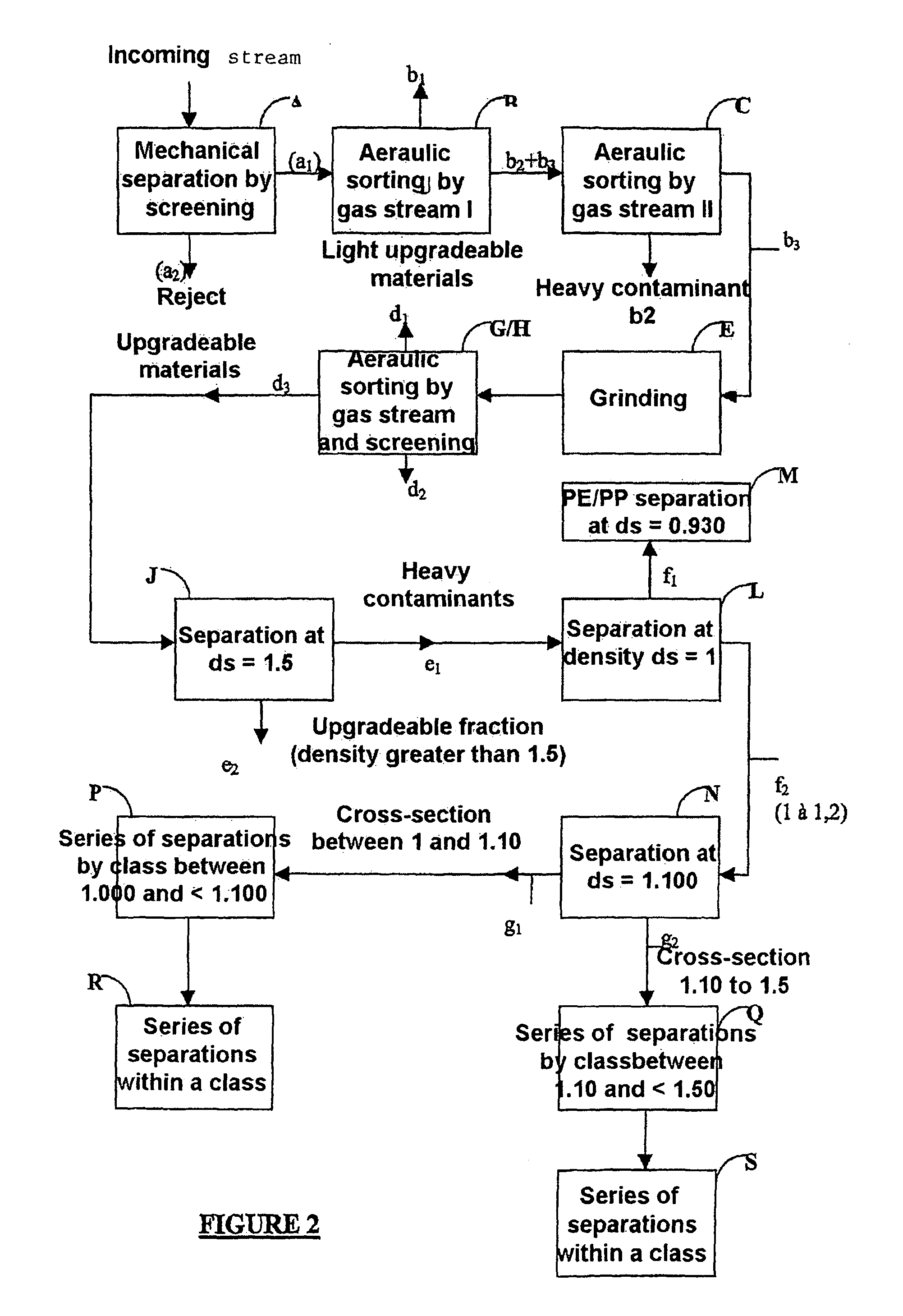Selective separation of used fragmented polymeric materials by using a dynamically stabilized dense aqueous suspension
- Summary
- Abstract
- Description
- Claims
- Application Information
AI Technical Summary
Benefits of technology
Problems solved by technology
Method used
Image
Examples
example 1
Corresponds to FIG. 1
[0143]On a site for industrial grinding of electrical household appliances that have reached the end of their serviceable lives and after separation of most of the various metals to be recovered, a 21.88-ton stream of upgradeable materials from this separation consisting of a mixture of used synthetic polymers to be upgraded and contaminants to be eliminated is subjected to a preconcentration phase in order to select, from this mixture of used polymer materials to be upgraded, the used polymer materials to be upgraded having a density interval ranging from 1.000 to 1.400 to be treated according to the invention, wherein the lower bound is included and the upper bound is excluded.
[0144]The composition of the flow of materials entering the preconcentration phase is given in table I below.
[0145]
TABLE IComposition andMaterialsgranulometryContent in weight %PolymersPE, PP, PS, ABS,73% by weightTalc PP, PVC, etc.in fragmented formRubber and / orAll types of joints and / 1...
example 2
Corresponds to FIG. 2
[0213]On a site for industrial grinding of automobiles that have reached the end of their serviceable lives and after separation of most of the various metals to be recovered, a 26.820-ton stream of upgradeable materials from this separation consisting of a mixture of used synthetic polymers to be upgraded and contaminants to be eliminated is subjected to a preconcentration phase as described in example 1 in order to select, from this mixture of used polymer materials to be upgraded, the used polymer materials to be upgraded having a density interval ranging from 1.000 to 1.600 to be treated according to the invention, wherein the lower bound is included and the upper bound is excluded, so as to enable the polyvinyl chloride (PVC) to be recovered.
[0214]The composition of the stream of materials entering the preconcentration phase is given in table IV below.
[0215]
TABLE IVComposition andMaterialsgranulometryContent in weight %PolymersPE, PP, PS, ABS,43% by weightT...
example 3
[0259]To confirm the capability of the method according to the invention for selective separation in a dense liquid medium of constituents of a mixture of synthetic organic materials which are polymers of different types, but some of which are very similar to others in terms of density, a synthetic mixture was prepared, having the following composition by weight, summarised in table VI:
[0260]
TABLE VISynthetic mixturesMeasuredKilogramsweightPolymerdensityadded%Ethylene-propylene0.90045045copolymerPolystyrene1.0502002020% talc-filled1.06015015ethylene-propylenecopolymerAcrylonitrile-butadiene-1.07010010styrene copolymerPolyamide 61.13404Polyvinyl chloride1.38606Total1000100%
[0261]This mixture is subjected to a density separation treatment in a dense liquid medium consisting of an aqueous suspension of CaCO3 powder dispersed in the aqueous phase and stabilised at the chosen density threshold by dynamic stabilisation means.
[0262]The dense separation medium consists of:[0263]an aqueous p...
PUM
| Property | Measurement | Unit |
|---|---|---|
| median diameter | aaaaa | aaaaa |
| median diameter | aaaaa | aaaaa |
| size | aaaaa | aaaaa |
Abstract
Description
Claims
Application Information
 Login to View More
Login to View More - R&D
- Intellectual Property
- Life Sciences
- Materials
- Tech Scout
- Unparalleled Data Quality
- Higher Quality Content
- 60% Fewer Hallucinations
Browse by: Latest US Patents, China's latest patents, Technical Efficacy Thesaurus, Application Domain, Technology Topic, Popular Technical Reports.
© 2025 PatSnap. All rights reserved.Legal|Privacy policy|Modern Slavery Act Transparency Statement|Sitemap|About US| Contact US: help@patsnap.com



